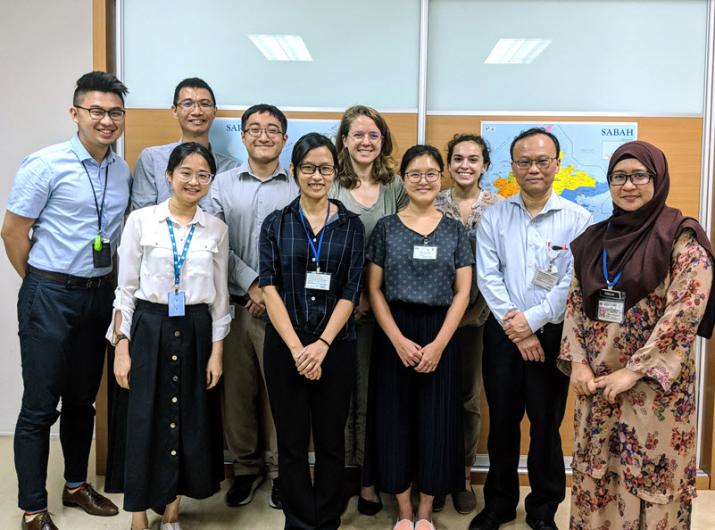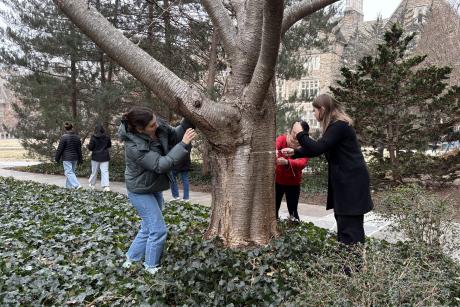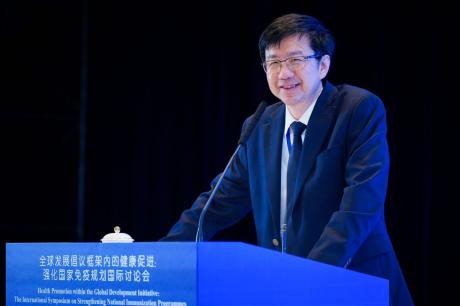
The Clinical Research Centre and the Bass Connections team (I'm in the back row, third from left).
Published August 22, 2018 under Voices of DGHI
By David Chen, rising sophomore biology major
“When I was younger, I thought science would make good things for everybody.”
– Richard Feynman, January 1988
To me, the objective of science and public health is to make the lives of people better. In this piece, I would like to share my experience working towards that goal and reflect on my participation in a 10-week long project that aimed to expand local surveillance capabilities of respiratory viruses.
Since our arrival in Malaysia nearly 10 weeks ago, we have been collecting bioaerosol samples from poultry farms, pig slaughterhouses and kindergartens all around Sibu, a town in the Sarawak region of Borneo island. Our goals are (1) to identify zoonotic respiratory viruses (influenza A, B, C and D, enterovirus, PCV2, PCV3, and PRRSv) in animal-human and human-human close-contact areas and (2) to expand viral surveillance capabilities of the local community. This is a follow-up study to a similar project conducted last summer. (Learn more about our project here.)

Taking a break during the 2-hour intermission between sampler set-up and take-down.
Stopping to eat and chat at a nearby café became a part of every sampling session with
Mr. Chong, who works for the Sarawak State Health Department in Sibu. From left to right:
Mr. Chong, Gina Kovalik, Juliana Zemke, David Chen (me), Dr. Jeffrey, and Dr. Gray.
Basically, we collect bioaerosol (air) samples using an air sampler and pump provided by the National Institute for Occupational Safety and Health (NIOSH) and then test those air samples for a variety of respiratory viruses using molecular techniques including real-time reverse transcription polymerase chain reaction (RT-qPCR) assays. Progress on our project has been incredibly smooth and straightforward. Besides a few laboratory complications and equipment malfunctions, the workflow has been steady, predictable and efficient. Further confirmatory analysis as well as viral culturing will be conducted at Duke, where we plan on publishing our results.

David Chen and Karen Lin posing in front of Tadika Fu Yuan Methodist
Kindergarten after sampling at the largest primary school in Sibu, Malaysia.
Sampling at the kindergarten was particularly interesting, as it is an area not often researched because of health and privacy concerns. Noninvasive bioaerosol samplers allow us to collect in sensitive areas more easily than ever before—and expand viral surveillance to a population that may be especially vulnerable to infectious pathogens.
Often the prevalence of an infectious disease is either unknown or variable from year to year. An example of this was the reemergence of Enterovirus 71 (EV71), a major causative agent of hand, foot and mouth disease (HFMD) in primary schools around Sibu. The disease has a nasty, well-publicized history in Sarawak. At Duke, we hope to be able to identify EV71 if it is present and provide useful data for the prevalence of the disease during this time.

Karen Lin and Juliana Zemke setting up NIOSH bioaerosol
samplers late one night at the local pig abattoir (aka slaughterhouse).
Zoonotic diseases are a danger to public health worldwide but especially in regions where humans and animals are in close contact. Our surveillance studies will hopefully provide useful information for local public health policy and a framework for future research in this field.
Through this research project, in addition to successfully expanding viral surveillance in the region, we have also expanded and nurtured our collaborator relationships. Without the help of our collaborators—Sibu Hospital Clinical Research Centre (CRC), SEGi University, and the Sarawak State Health Department—this project would not have been possible.
My time in Malaysia this summer has led me to a few key conclusions about partnership:
- The relationships we make and maintain in our collaboration are as valuable as the research we conduct. In other words, it is not either research or collaboration; they go hand in hand to help everyone all participating parties conduct more effective research.
- Global health research is neither a capitalist exchange of services, nor is it a charity hand-out. In this project, we are not trading Duke resources for exclusive rights to research in their country, nor are we volunteering our time like an NGO—we are collaborating to conduct useful research that may improve the surveillance capabilities of the region.
- Collaborators should have an interest and a significant involvement in our research. Dr. Jeffrey, one of the head researchers at the CRC and pictured above, has helped us tremendously by communicating with local poultry farmers about scheduled visits. Mr. Chong and Mr. Anthony are both public health researchers working for the Sarawak State Health Department; they helped us arrange for sampling visits to the local abattoir and kindergartens. Without their support and commitment to our project, it would not have been possible.
- To establish sustainable practices, we must sustain communications and commit ourselves to a mutual understanding of each party’s objectives.
- In order for us to establish effective surveillance, it is important to have focus and a clear understanding of the scope of our project. Bioaerosol sampling at kindergartens for respiratory viruses is a novel idea and potentially a stepping-stone for future research in this population.
It is no surprise that the Sarawak State Health Department knows more about Sibu’s health than we do and that the doctors at Sibu hospital and the local clinics see cases of the very respiratory viruses we intend to identify on a daily basis. As such, I think it was incredibly valuable for Dr. Gray, the Duke One Health Network team lead, to have an established relationship with our collaborators coming into this research project.
I entered into this project with a good-willed but egotistic perspective that my expertise and technical training in the U.S. can be equally applied to Sarawak, Malaysia. I think it’s okay to admit that there are limits to our knowledge in unfamiliar places and that is the purpose of research.
Overall, I am impressed by the efforts of the Health Department to disseminate useful public health information as well as respond to infectious disease. I believe that the relationships we established here have and will hopefully continue to foster productive and useful research. I think it’s important to not underestimate the effectiveness of good international collaboration in promoting good science.


